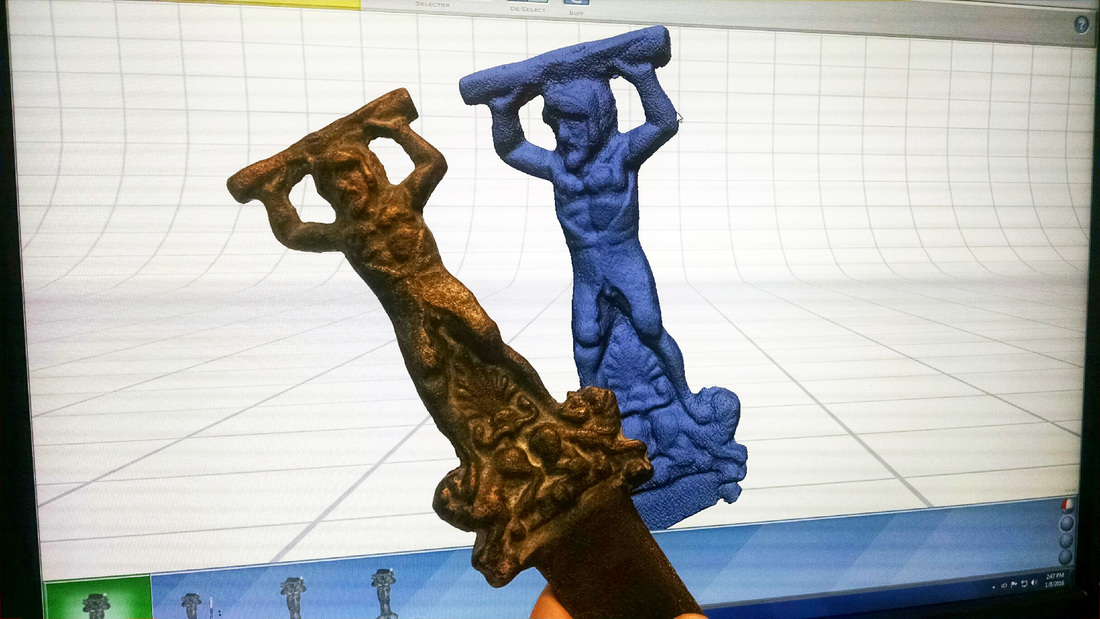Last night, I did an interview with Serra Head and Kenneth Feder for the ArchyFantasies podcast series. We talked about the sword and sword-related topics, including how this story has played out so far and what we can learn from it. The podcast should be available in a couple of weeks. Full disclosure: I was drinking a glass of wine during the interview. Given how long I've been in the trenches with Swordgate, I think I've earned it.
I'm playing around with my 3D scan data from the Design Toscano sword. I only just got my scanner working properly before the holidays, so this has been a good opportunity to play with it before I start using it to crank out real archaeological data (i.e., 3D models of actual artifacts that can tell us something about the past). There's a lot to learn as far as figuring out the settings for finding a good balance of scan resolution and file size. I made some pretty detailed scans of the Design Toscano sword (the raw data for a single scan exceed 1 GB at the settings I used), and it's taking a long time to experiment with different processing settings. You have to first fuse the various scans together into a single model then run algorithms to "polish" the model. The trick is not to polish out details that are in the original along with the noise.
Finally, I received yet another "take down your picture of the sword" email from J. Hutton Pulitzer (and, in a shocking development, Steve was CC'd). This time it was about the sword image that I used in my first blog post on the matter. It's the same image that's posted all over the internet now (when I do a Google image search on it I get about 600 hits), but apparently Pulitzer has a problem with me using it to illustrate what he's talking about. I don't have time for the silly games, so I took down the image and replaced it with a referring link to a YouTube video that shows the sword. Yawn.
In his email, Pulitzer said that I could "license the image." I inquired as to the purchase price of such a license, but have yet to get a response.
And now you are up to date.



 RSS Feed
RSS Feed
